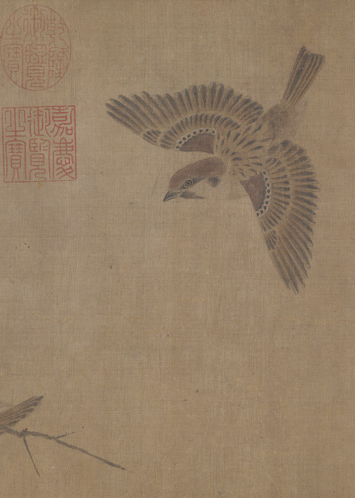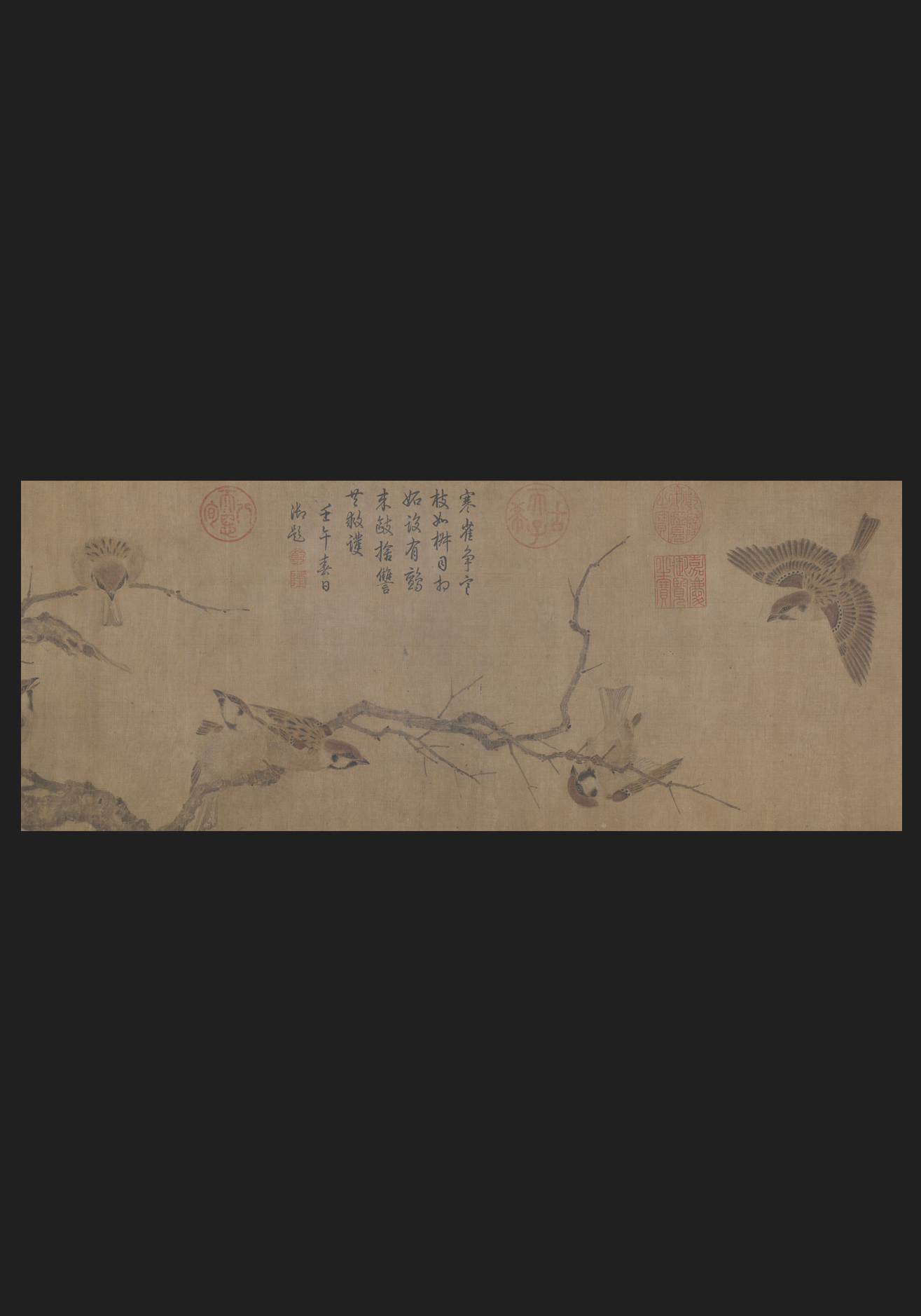寒雀图
Sparrows in Winter
Sparrows in Winter
Couldn't load pickup availability
Share
Cui Bai's "Sparrows in Winter" - A Reproduction of a Northern Song Dynasty Masterpiece
Sparrows in Winter is a renowned painting by Cui Bai (active 11th century), a master artist of the Northern Song Dynasty known for his exceptional skill in depicting nature and wildlife. This work captures a serene yet lively scene of sparrows perched on a withered tree during winter. The painting is celebrated for its realistic portrayal of the birds, their dynamic postures, and the subtle textures of the tree branches, all rendered with delicate brushwork and a restrained yet evocative color palette.
Cui Bai's ability to convey the vitality and character of the sparrows is remarkable. Each bird is depicted with unique gestures and expressions, creating a sense of movement and life within the stillness of the winter landscape. The composition balances simplicity with intricate detail, highlighting the artist's keen observation of nature and his mastery of the xieyi (freehand) style, which emphasizes spontaneity and expressiveness.
This painting is a testament to the Northern Song Dynasty's artistic achievements, particularly in the genre of bird-and-flower painting. It reflects the period's deep appreciation for the natural world and the philosophical ideals of harmony and resilience.
This reproduction faithfully captures the elegance and depth of the original, making it a treasured piece for collectors and admirers of classical Chinese art. It offers a glimpse into the refined aesthetic and technical brilliance of Northern Song Dynasty painting, perfect for those who appreciate the beauty of nature and the artistry of ink and brush.
Cui Bai (also known as Cui Bo, style name Zixi) (fl. 1050–1080) was a prominent Chinese painter of the Northern Song Dynasty (960–1279). A native of Anhui Province,[2] Cui was best known for paintings of animals and plants. At some point during his life, he travelled to the capital of Kaifeng to seek employment as a court artist, and was accepted by Emperor Shenzong of Song, who admired his works. He became a renowned artist of Shenzong's court but gained an awkward reputation for his often-eccentric behaviour.
Cui Bai is today known for two paintings depicting magpies and sparrows respectively. Magpies and Hare, also known as "Double Happiness", because "two magpies" in Mandarin Chinese is pronounced the same as "two happiness", is held in the National Palace Museum, Taipei. The painting would have been meant as a gift to someone to congratulate them in some way, most likely for a wedding. Wintery Sparrow, a large handscroll, is kept in the Palace Museum in Beijing.
北宋崔白寒雀图真迹原图复制
崔白(又名崔波,字子西)(fl. 1050–1080)是一位著名的中国人 北宋画家(960-1279)。 崔是安徽人,以动植物画而闻名。 其间,他曾到京城开封谋求宫廷画师的职位,并受到宋神宗的赏识,并受到宋神宗的赏识。 他成为神宗宫廷中著名的艺术家,但因其经常古怪的行为而获得了尴尬的名声。
崔白如今因两幅分别描绘喜鹊和麻雀的画作而闻名。 喜鹊与野兔,又称“双喜”,收藏于台北故宫博物院。 这幅画本来是作为礼物送给某人,以某种方式祝贺他们,很可能是为了婚礼。 大型手卷《冬雀》,现藏于北京故宫博物院。




